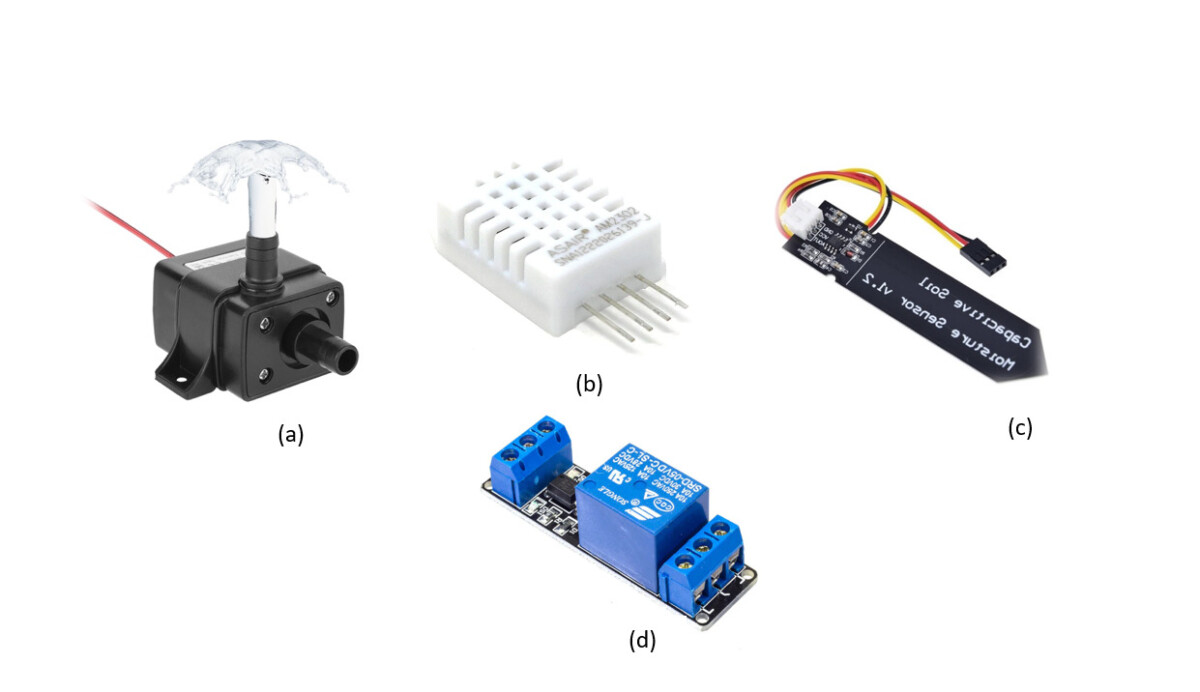
Savonia Article: Advancing Environmental Sustainability through Smart IoT Systems
Abstract:
In the face of growing environmental challenges and the urgent need for sustainable solutions, integrating technology with agriculture has gained substantial attention. This report explores developing and implementing a smart, automated water irrigation system that utilizes modern tools and components, including the Arduino Uno, ESP8266, DHT22 sensor, capacitance soil moisture sensor, LED grow light, and 12V DC water pump. The system facilitates efficient irrigation and aligns with climate change mitigation and the United Nations Sustainable Development Goals (SDGs). This report delves into the system’s design, functionality, and role in advancing sustainability.
Introduction
The ever-increasing impacts of climate change necessitate innovative strategies to ensure food security, water conservation, and environmental sustainability. Automated water irrigation systems offer a promising avenue for achieving these objectives. This report focuses on the development, functionality, and broader implications of a smart irrigation system harmonizing technology with agriculture.
Climate Change Mitigation
The implications of this smart irrigation system extend far beyond efficiency gains. By accurately delivering water when necessary, the system addresses scarcity in water concerns exacerbated by climate change. Reduced water wastage through precision irrigation contributes to conserving this precious resource. Furthermore, incorporating renewable energy sources, such as the 12V battery and LED grow light, aligns with the drive to curb greenhouse gas emissions.
- Water Conservation: Smart irrigation systems use sensors and data analytics to determine optimal irrigation schedules based on real-time weather conditions, soil moisture levels, and plant needs. This precision irrigation reduces water wastage, preventing overwatering and ensuring that crops receive just the right amount of water they need. This minimizes water consumption and conserves this precious resource, which is especially vital in regions facing water scarcity due to climate change.
- Energy Efficiency: Traditional irrigation methods can be energy-intensive, often relying on fossil fuels for water pumping. The Smart irrigation systems can be powered by renewable energy sources, such as solar energy. By reducing energy consumption, these systems contribute to lowering greenhouse gas emissions, thus helping combat climate change.
- Reduced Runoff and Erosion: Overwatering can lead to excessive runoff and soil erosion, which can carry sediment and pollutants into water bodies. Smart irrigation systems ensure that water is applied efficiently to the roots of plants, reducing runoff and erosion. This supports healthier soil and prevents contamination of water resources.
Contribution to Sustainable Development Goals
The system’s alignment with the United Nations Sustainable Development Goals is noteworthy.
- SDG 2 (Zero hunger): This is addressed by promoting efficient agricultural practices and ensuring food security. Smart irrigation helps enhance agricultural productivity by ensuring that crops receive optimal water levels. This improves crop yields, food security, and income for farmers. It contributes to ending hunger and achieving food security, particularly in areas where agricultural practices are vulnerable to climate variability.
- SDG 6 (Clean Water and Sanitation): This is supported through responsible water usage. Efficient water use through smart irrigation reduces water wastage, preserving water resources for both agricultural and domestic needs. This promotes access to clean water and sanitation, which are essential for human well-being.
- SDG 9 (Industry, Innovation, and Infrastructure): This is advanced through applying cutting-edge technology in agriculture. SDG 13 (Climate Action) is furthered by mitigating water wastage and reducing carbon footprints. Smart irrigation systems contribute to climate resilience and adaptation efforts by conserving water and energy. They also reduce carbon emissions associated with traditional irrigation practices, aligning with global climate action targets.
- SDG 15 (Life on Land): This is about enhancing land productivity and biodiversity through sustainable irrigation. Smart irrigation systems aid in sustainable land management by preventing soil erosion and promoting healthy soil structure. This supports the restoration of degraded land and the preservation of biodiversity.
System Components and Functionality
The heart of the system lies in its intricate integration of components. The Arduino Uno is the central control unit, orchestrating the interactions between the sensors and actuators. A relay controls the 12V DC water pump, ensuring precise irrigation based on moisture levels detected by the capacitance soil moisture sensor. The DHT22 sensor monitors temperature and humidity, providing crucial environmental data for optimal plant growth. The LED grow light, powered by a 12V battery, simulates sunlight, fostering indoor plant development. Figure 1 and Figure 2, respectively, show the system components and circuit diagram of the system.

Figure 1: System Components a) Water motor b)DHT 22 Sensor c) Moisture Sensor d) Relay

Figure 2: Circuit diagram for the proposed system
Practical Experimental Setup
Figure 3 shows the build platform for the entire smart IoT irrigation system.

Figure 3: Experimental setup with Arduino Uno and Connection
Data Collection and Management
The sensors’ data is transmitted via the ESP 01smodule to the ThingsBoard web application and its corresponding mobile app. This real-time monitoring not only assists farmers in making informed decisions but also reduces water wastage through targeted irrigation. The system’s user-friendly interface enhances accessibility, fostering broader adoption of sustainable agricultural practices. The data visualization is shown in Figure 4.

Figure 4: Data visualized on the serial monitor
Practical Video
Smart Irrigation using Arduino Uno and relay video: https://www.youtube.com/watch?v=ugmst3bKk0E
Conclusion
The smart, automated water irrigation system presented in this report epitomizes the fusion of technology and agriculture to tackle climate change challenges and advance the SDGs. It aligns with climate change mitigation strategies by conserving water, promoting energy efficiency, and reducing soil erosion. It also supports various SDGs related to food security, water resource management, climate action, and sustainable land use. This system’s technological advancements contribute to creating a more sustainable and resilient future through precision irrigation, data-driven decision-making, and innovative design. This system serves as a beacon of sustainability in modern agriculture. Its potential to revolutionize agricultural practices while mitigating the impacts of climate change underscores the significance of such integrative solutions in building a more resilient and sustainable future.
Authors: Kelvin C Aliche, Rajeev Kanth
Emails: kelvin.aliche@edu.savonia.fi , rajeev.kanth@savonia.fi